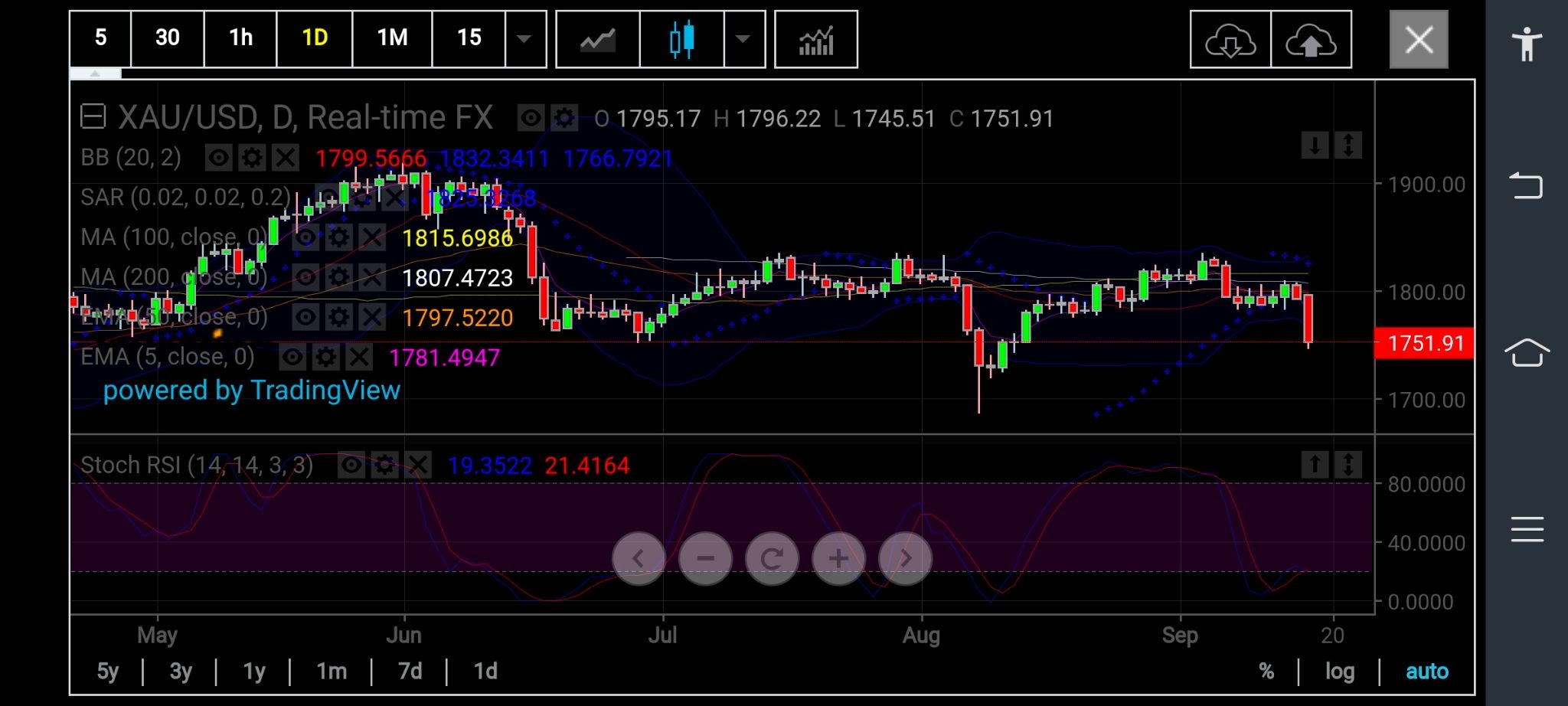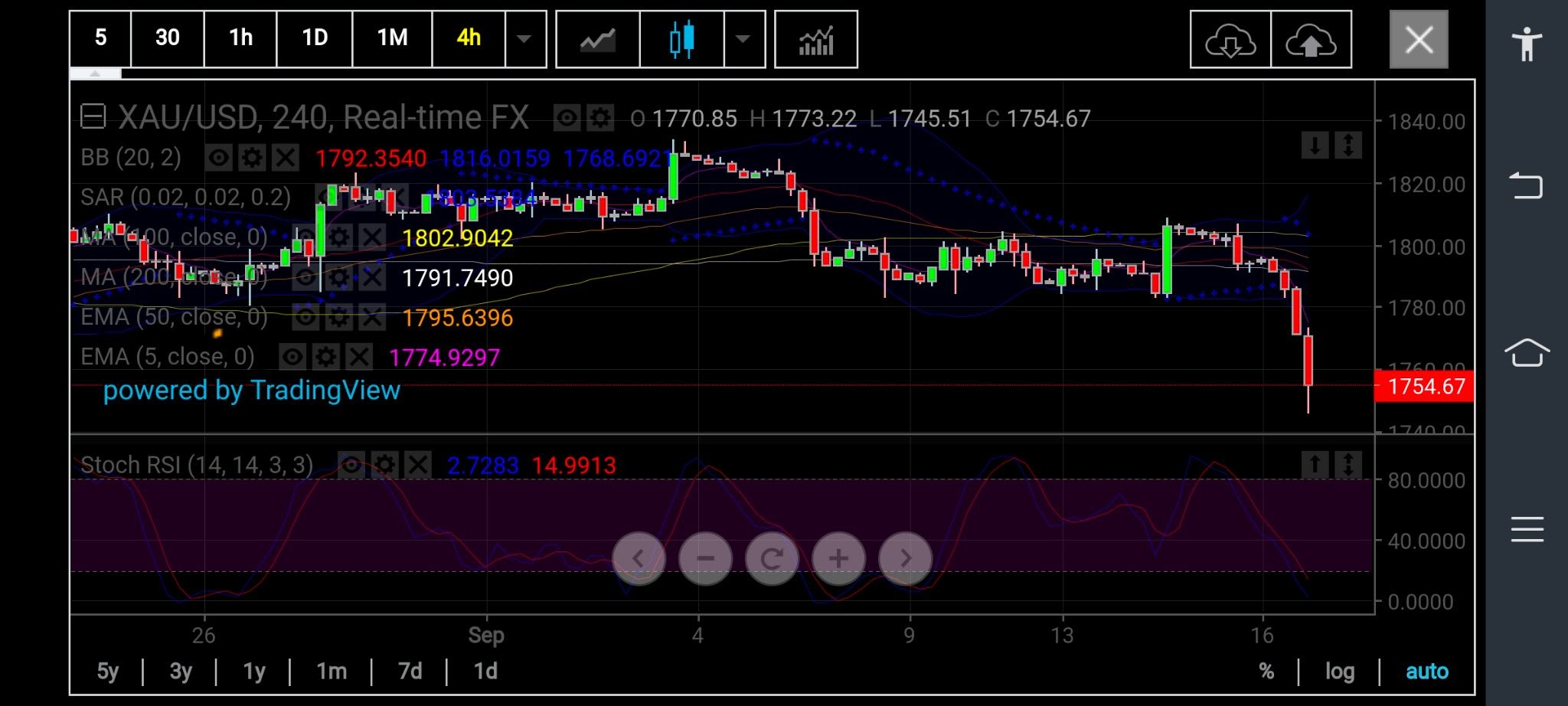The script is almost the same each time:
Good US economic data; dollar rockets, gold crashes.
Bad US data; dollar tumbles, gold pauses or struggles to rally.
Non-consequential US data; dollar pauses, gold falls a few notches.
No matter the data, gold often seems doomed.
It’s quite normal these days to see the yellow metal cave $30 - $40 an ounce at a time and recover just about half of that over several days or even weeks. Seldom is the rebound commensurate with the fall and almost never does it overshoot the other way. It can, however, lose in a few hours twice of what it may have taken weeks to build.

All charts courtesy of SK Charting
For what is supposedly the world’s ultimate safe haven and hedge against the dollar and fiat currencies, gold has been an epic failure.
It hasn’t always been like this, of course.
Just slightly over a year ago, gold hit record highs above $2,000 an ounce after a dizzying six-month run as the dollar and US Treasury yields both broke down at the height of the COVID outbreak.
So, has everything changed since? Yes, but in a way that’s supposed to favor gold. The Federal Reserve, in its attempt to rescue the pandemic-distressed economy, has spent almost $2.2 trillion buying bonds and other assets over the past 18 months and seems happy to throw more money at the problem despite things being a lot better now than in March 2020 when it began the exercise.
It’s not just the central bank that’s spending. Federal government aid for COVID, which began under the Trump administration, has reached at least $4.5 trillion to date. And the Biden administration is asking Congress to approve almost $4 trillion more for its so-called “Build Back Better” plan.
Gold Down More Than $300 From 2020 Record
The eye-watering bill for the repair of America should have decimated the dollar by now and sent gold, the inflation hedge, to parabolic heights beyond last year’s $2,000 record. Instead, Uncle Sam’s currency is doing well as the reserve legal tender of the world. Gold, historically known as the “real currency,” is down more than $300 from its August 2020 peak and may even fall to below $1,600 at the rate it is melting. If that happens, it would wipe out almost all of the 2020 rally.
Various theories have been expounded for gold’s inane behavior versus the dollar.
Among them is Bitcoin and how it has sucked up a significant amount of the safe-haven flows traditionally meant for gold. We can debate the merits of whether the crypto bandwagon is even worth being considered as a safe-haven parallel to gold, but that’s another story altogether.
There’s also the conspiracy theory among a community of traders that the Fed is intentionally willing gold to be suppressed, in order to keep the Dollar Index above the key 90 level. The work is apparently done by a handful of so-called bullion banks. This will never likely be proven, so it will have to remain a theory.
Another conjecture making its rounds is that gold has just “lost it” as an inflation hedge and that the Fed will somehow contain the pressures bubbling from America’s runaway spending. Inflation will be contained, so no need to buy gold; in fact buy more stocks is this BS theory.
But there’s a more acceptable reason why gold is behaving as it is. And that, according to Lance Roberts, of Houston-based investment house RIA, has “absolutely nothing” to do with gold itself and everything to do with investors, who have gotten too brazen with inflation under a Fed holding to its exorbitant stimulus despite every sign that it should start tapering. These are people who’re too deeply ensconced in the comfort zone of an S&P 500 whose last meaningful correction was a year ago.
‘No Fear’ In a Financial System Gone Dizzy
What ails gold is the absence of fear among this crowd who’ve become as dizzy as the financial system that’s been erected upon the beach sand of easy, artificial credit, Roberts says in a post covered by markets blogger Brian Maher.
“There is presently no ‘fear’ present to drive investors into the psychological safe haven of gold,” Roberts said.
“That lack of fear is evident in everything from: Record issuance of money-losing IPOs; mass issuance of SPACs; record margin debt levels; near-record stock valuations; retail investors taking on personal debt to invest; Bitcoin; and last but not least—belief by investors of the ‘Fed Put.’”
In other words, “the bug has yet to hit the windshield,” he says, adding:
“Given that gold is no longer exchangeable for currency, and vice versa, the broken link as an inflation hedge remains. In today’s “fiat” currency economy, the ability to use gold as a method for transactions on a global scale remains destroyed. Therefore, gold has become a “fear trade” over concerns of the dollar’s demise, inflation and an economic reset.”
“While there are valid reasons to be concerned with such disastrous outcomes, those events can take decades to play out… the ‘bug has yet to hit the windshield.’ Yes, it eventually will, but how much longer it will take is unknown.”
As is always the case with market participants, Maher concludes that the realization will come when “it is too late.”
There is, however, much wrong with a financial system gone dizzy, a financial system erected upon the beach sand of easy credit, of artificial credit.
Gold Needs To Get Above $1,835
But where will gold likely go in the interim, like even in the next week or so?
For that, we have Sunil Kumar Dixit, chief technical strategist at SK Charting in Kolkata, India and a regular contributor of trading ideas to Investing.com, to hazard a guess.
The spot price of gold has put in a recovery since bottoming at $1,745 on Thursday after a $50 plunge at one point that broke the 100-week Exponential Moving Average.
“The short-term four-hour time frame chart shows an oversold Stochastic RSI that may trigger some limited upside to retest the break-down point of $1,775,” said Dixit. “If buyers continue stepping in for value and limited gains, it is likely to scale further, reaching $1,795 - $1,805.”

Specifically, spot gold could retrace in stages the $1,777 - $1,787 - $1,790 - $1797 levels if the $1,755 support holds.
But without a meaningful return to $1,800, the uptrend might not last, said Dixit.
“The main trend changes only upon a decisive trade above the $1,835 zone, and that has witnessed multiple failures,” he adds.
Disclaimer: Barani Krishnan uses a range of views outside his own to bring diversity to his analysis of any market. For neutrality, he sometimes presents contrarian views and market variables. He does not hold a position in the commodities and securities he writes about.
